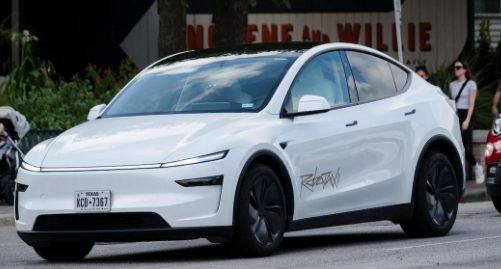Introduction
Tesla, the name synonymous with innovation, is on the verge of unleashing its autonomous Robotaxi fleet. But there’s one critical concern Elon Musk’s team isn’t ignoring: What if someone intentionally interferes with Tesla Robotaxis?
In a proactive move, Tesla is asking serious questions to prevent scenarios that could jeopardize passenger safety, vehicle integrity, or public trust. Here’s everything you need to know.
Tesla’s Robotaxi Ambitions
With a projected launch by late 2025 or early 2026, Tesla’s autonomous Robotaxis are built on the company’s Full Self-Driving (FSD) platform and expected to operate without human drivers. These electric vehicles will provide ride-hailing services at lower costs than Uber or Lyft.
This move aligns with Tesla’s mission to accelerate the transition to sustainable transportation—without a steering wheel in sight.
What Prompted Tesla’s Sabotage Concerns?
Recently filed documents with the U.S. National Highway Traffic Safety Administration (NHTSA) reveal Tesla is preparing for adversarial interactions—situations where people might tamper with or intentionally obstruct its self-driving vehicles.
Examples Tesla is considering:
- Pedestrians standing in front of Robotaxis to block them
- Throwing objects at the vehicle to confuse sensors
- Hackers trying to interfere with navigation systems
- Sudden lane changes by nearby drivers to test FSD response
These are no longer hypothetical issues; other AV companies like Waymo and Cruise have already faced similar incidents in San Francisco.
The 5 Critical Questions Tesla Is Asking
Tesla’s internal legal and AI teams are believed to be working on these strategic queries:
1. What if someone intentionally obstructs a Robotaxi’s path?
Passive monitoring through external cameras and interior dashcams will detect such events for real-time response.
2. How can the vehicle detect tampering or sabotage attempts?
Tesla is enhancing AI training to recognize and log abnormal human behavior, such as being approached aggressively or tampered with.
3. Can Tesla Robotaxis alert authorities without human involvement?
Yes. Integration with cloud-based systems and Tesla HQ could trigger automatic alerts and push notifications to local law enforcement.
4. Will vehicles be able to reroute or escape dangerous scenarios?
AI navigation may allow “evasion protocols” that reroute vehicles when threats are perceived.
5. How will Tesla ensure legal protection if a Robotaxi is attacked?
The company is lobbying for regulatory protections and liability limitations through Congress and NHTSA guidance.
Key Safety Features Built In
Tesla is not leaving this to chance. These Robotaxis are expected to include:
- 360° camera vision
- Redundant sensors (LiDAR isn’t confirmed yet)
- End-to-end neural nets for object and gesture recognition
- Live vehicle monitoring via Tesla app
- Encrypted route management
Implications for Future Urban Mobility
The concerns Tesla is raising go beyond just technology. They touch on:
- Urban planning: Do cities need robotaxi-only lanes or geofencing?
- Ethics: Who’s liable—Tesla or the saboteur?
- Public perception: Can people trust AVs not to be hacked or harassed?
This development also adds pressure on regulatory bodies to adapt quickly. Expect more formal guidelines around autonomous vehicle safety in the coming months.
Frequently Asked Questions (FAQs)
Q1: When will Tesla launch its Robotaxi service?
Tesla aims to launch its Robotaxi service by late 2025 or early 2026, pending regulatory approval.
Q2: Will the Robotaxis have a steering wheel?
No. Elon Musk has confirmed Tesla’s Robotaxi will not have a steering wheel or pedals.
Q3: How safe are Tesla Robotaxis from tampering or hacking?
Tesla is developing advanced AI and encryption to detect and prevent physical and digital interference.
Q4: What cities will Robotaxis operate in first?
Initial deployment is expected in California, Texas, and other areas with favorable autonomous vehicle laws.
Q5: Can passengers call emergency services through the Robotaxi?
Tesla may integrate emergency voice-over protocols and push notifications for safety situations.
Conclusion
Tesla’s forward-thinking approach doesn’t stop at autonomy—it includes public safety, accountability, and system resilience. By asking uncomfortable but necessary questions today, the company aims to bulletproof the future of autonomous mobility.
Expect these questions—and the answers Tesla Robotaxis finds—to shape how cities and laws evolve in the age of AI-driven transportation.

